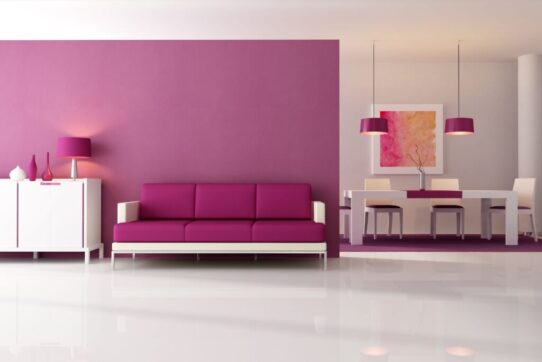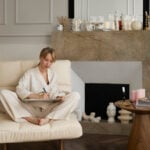Hey paint-wielding peeps! Feeling like your walls are caving in? Living room looking more like a cozy closet than a chill hangout spot? Don’t worry, boo boos! A splash of paint is all it takes to turn that tiny space into a light and airy dream.
But with a gazillion colors out there, how do you pick the perfect one to make your room feel bigger and brighter? No sweat, my friends! This post is your ultimate guide to the 7 best colors to a make room look bigger and brighter.
We’ll be talkin’ color magic, light tricks, and how to pick the perfect shade to transform your space from cramped to oh-so-inviting! So grab your paintbrush (or that handy swatch booklet) and get ready to create a light and airy haven that won’t feel like a tiny shoebox anymore!
Soft Pastel Shades Colors to a Make Room Look Bigger and Brighter
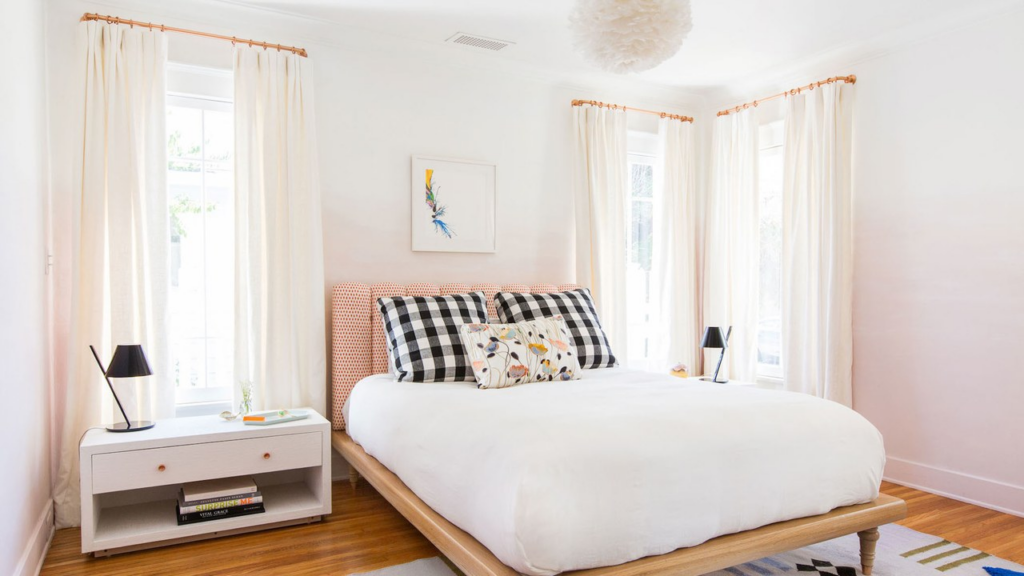
The Magic of Muted Tones
Pastel colors, with their soft and muted tones, can instantly make a room feel more spacious. Colors like baby blue, mint green, or pale peach reflect light, enhancing the brightness of a room. They also recede visually, which gives the illusion of a more expansive space.
Pairing with Decor
When decorating with pastels, consider using contrasting light-colored decor or furniture. This maintains the room’s airy feel and adds a touch of sophistication.
Classic White
The Timeless Appeal
White is a timeless choice when the aim is to make a room appear larger and brighter. Its neutral nature reflects light effectively, pushing walls outward and illuminating dark corners.
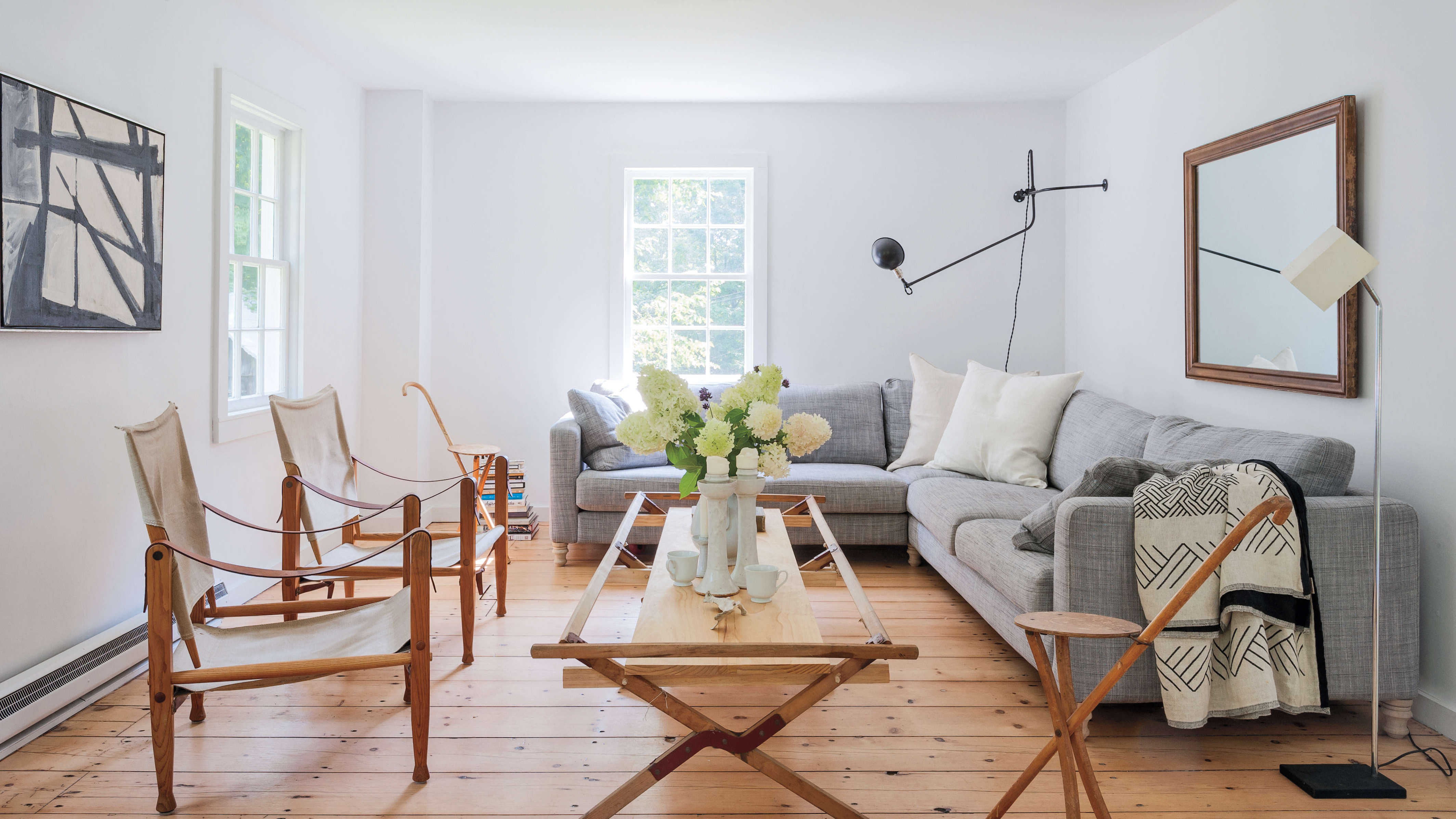
Styling Tips:
While white can sometimes feel sterile, adding textured fabrics, plants, or wooden elements can introduce warmth and depth.
Cool Blues and Greens
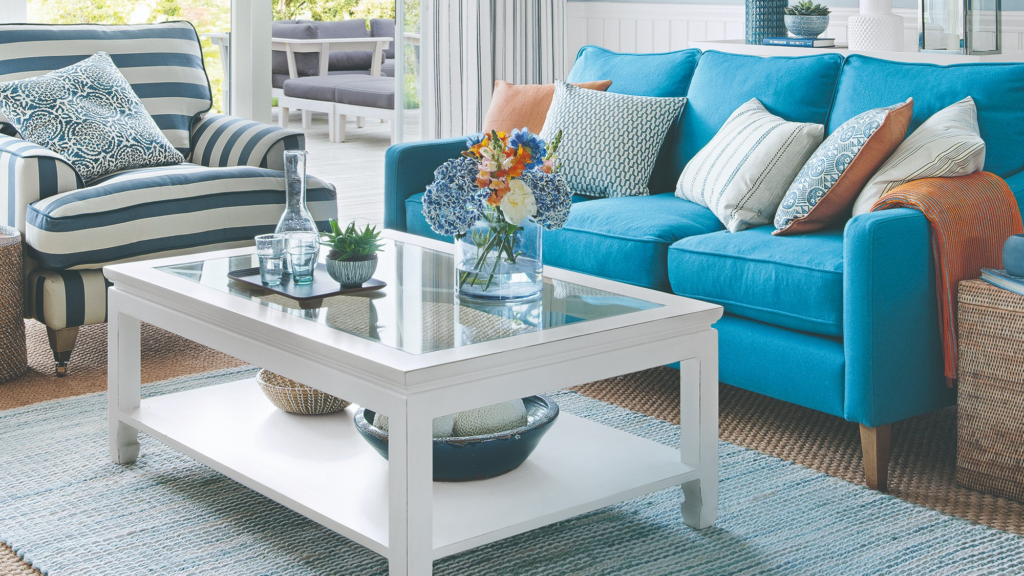
Oceanic Expansiveness brings Shades reminiscent of the sea and sky, like cool blues and greens, can evoke feelings of openness. These colors are calming and can extend the boundaries of a room.
Decorative Balance can pair these shades with neutral-colored furnishings to maintain a serene and balanced environment. Metallic accents in gold or silver can also add a touch of luxury.
Light Grays
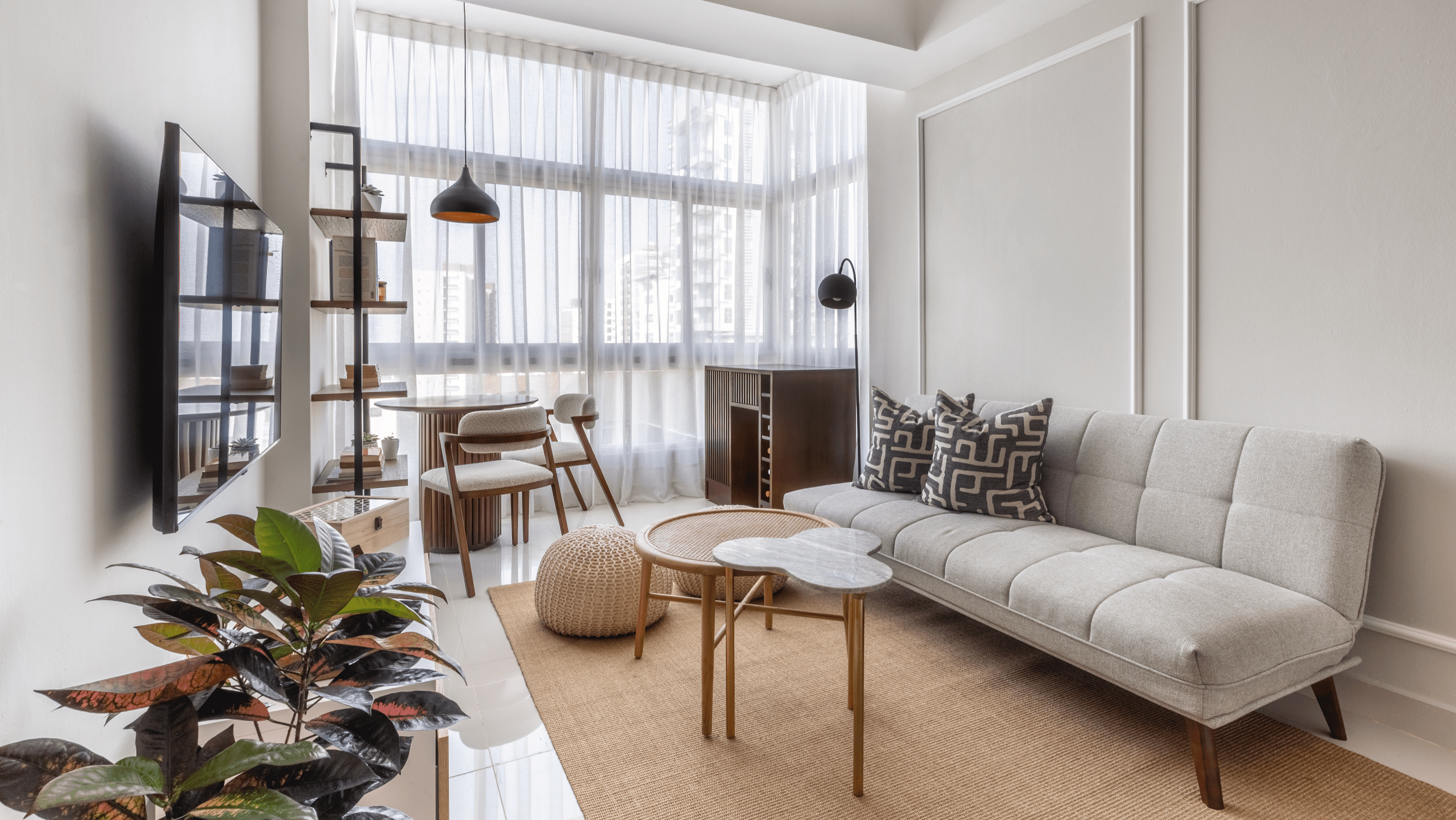
Modern and Versatile
Light grays are modern and versatile and can serve as a neutral backdrop. They can amplify natural light, making spaces feel open and airy.
Combining Shades
Consider using a combination of light and dark grays. This creates a subtle contrast, adding depth without compromising the sense of space.
Lavender and Lilac
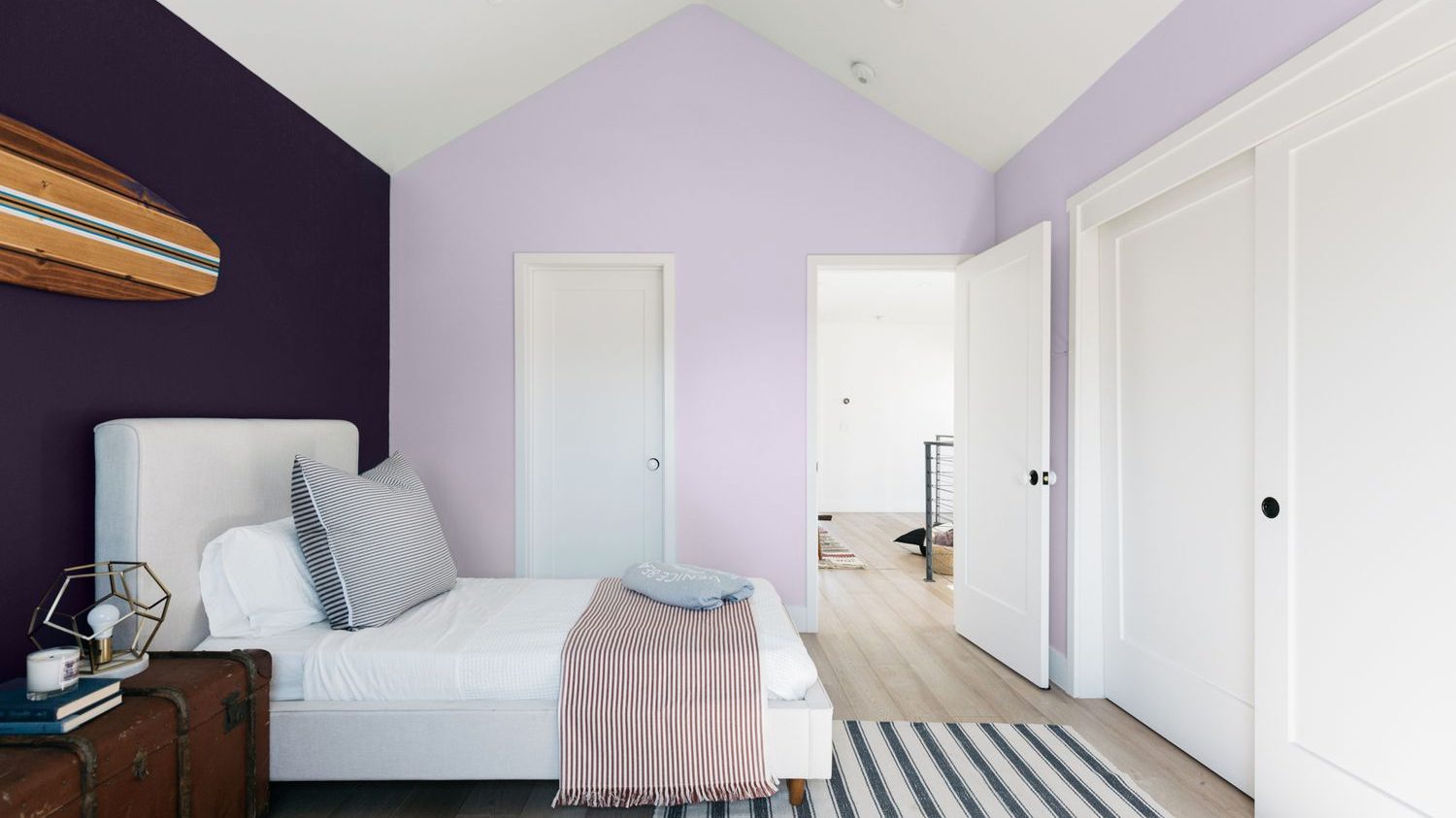
Elegance with Depth:
Lavender and lilac, while being unique, can also make a room feel open and bright. These colors offer depth without overwhelming the space.
Accessorizing:
Metallic accents, especially in gold, complement these shades beautifully. They add a touch of elegance and enhance the room’s luminosity.
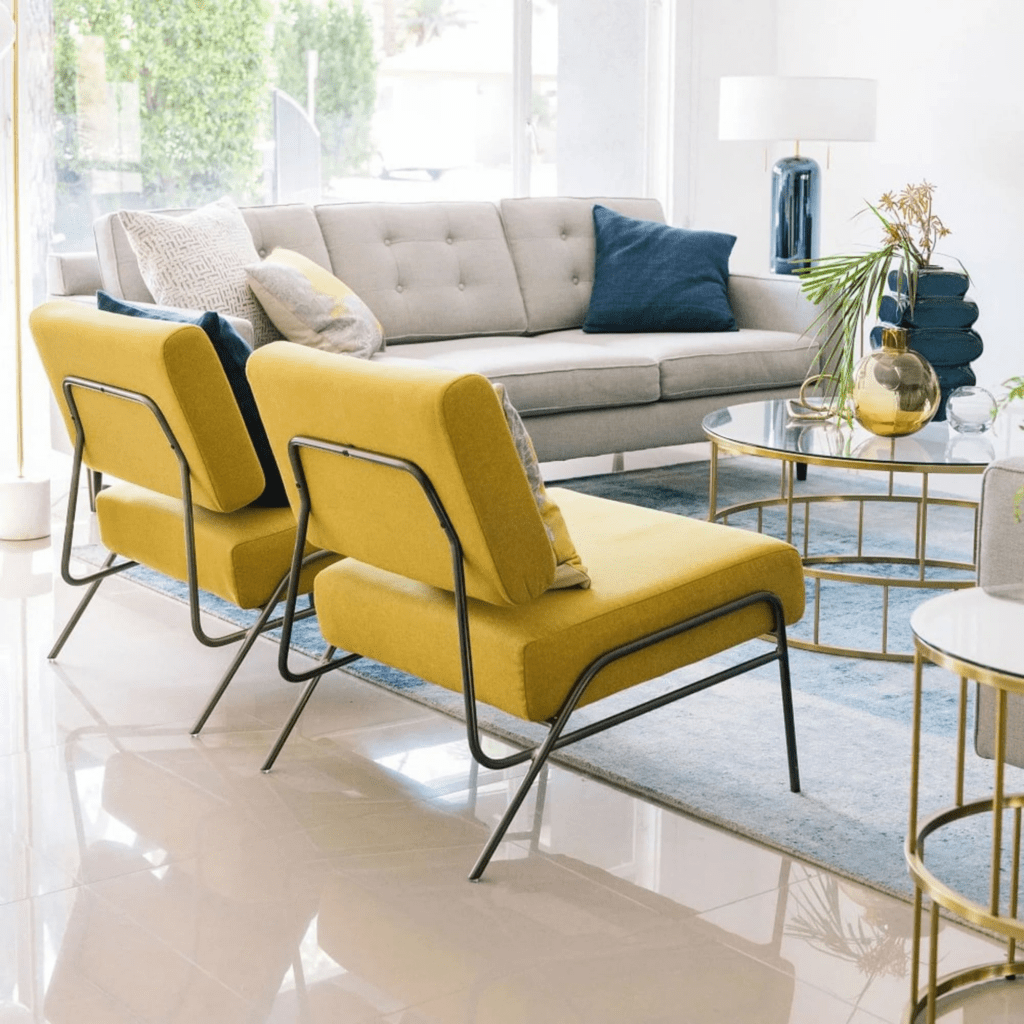
The Science of Light & Reflection: How Color Makes Your Room Breathe
We all want that bright and airy feeling in our homes, but did you realize that paint colors can influence our sense of size? It’s all about utilizing the power of light reflection, folks! Lighter hues with a greater Light Reflectances Value (LRV) reflect more light, making a space appear bigger and more open. Imagine opening all the curtains and replacing harsh overhead illumination with soothing bulbs — immediate transformation!
Here’s the science breakdown:
- Light Reflectance Value (LRV): This fancy term measures a color’s ability to reflect light. The scale ranges from 0 (black, absorbing all light) to 100 (white, reflecting all light). For a spacious feel, aim for colors with an LRV of 60 or higher.
- Wavelength & Perception: Cool colors, like pale blues and soft greens, have shorter wavelengths that tend to scatter more readily, making them appear to recede and creating a sense of spaciousness. Warm colors, with longer wavelengths, tend to visually advance, making a room feel cozier but potentially smaller.
But remember, design isn’t just about following the rules –– it’s about embracing your personal style! So, while lighter colors are champions of maximizing space, there are ways to incorporate pops of color without sacrificing that open-air vibe.
Expanding Your Space: Innovative Color Tricks Beyond Wall Paint
In the quest to make our rooms look bigger and brighter, we often focus solely on wall colors. But what if we told you that there’s more to the story? Beyond the hues on your walls, there are innovative ways to use color throughout your room that can dramatically change your space’s perception.
1. Ceiling Wonders: Light or Dark?
While walls get most of the attention, don’t overlook your ceiling. Painting your ceiling a lighter shade than the walls can make the room feel taller and more open. Conversely, a darker ceiling creates a cozy, more intimate vibe while still maintaining a sense of spaciousness.
2. Accent Colors for Depth:
Introducing accent colors through furniture, curtains, or rugs can add depth and character to your room. Using a contrasting color for one wall or a portion of it can create an optical illusion, making the room appear longer or wider.
3. Reflective Surfaces and Strategic Lighting:
Mirrors and metallic finishes can reflect light, making your space look more expansive. Combine this with strategic lighting—think wall sconces or floor lamps—to brighten up dark corners and add an extra layer of depth.
4. Color Coordination with Furniture:
Choose furniture that complements your wall color. Light-colored furniture can make the room feel airier, while darker pieces create a striking contrast, adding to the room’s dynamic appeal.
5. Flooring: An Often Overlooked Aspect:
The color and pattern of your flooring can also influence how big a room looks. Light-colored flooring can open up a space, while interesting patterns can draw the eye and distract from the room’s actual size.
Collaboration is Key: Adding Depth with Accent Colors (and Avoiding the Tunnel Effect)
Let’s be honest, an all-white room can feel a little sterile, right? That’s where the magic of collaboration comes in, loves! Accent walls are a fantastic way to add depth, visual interest, and a touch of personality to a space, even when the main color scheme is light and airy.
The Power of Collaboration (Pros):
- Break Up the Monotony: A well-placed accent wall can prevent your room from feeling like a giant white box. It injects personality and creates a focal point, drawing the eye and grounding the space.
- Highlight Architectural Features: Do you have a beautiful fireplace or a stunning bay window? An accent wall draws attention to these architectural gems, preventing them from getting lost in a sea of white.
- Embrace Boldness (in Small Doses): Love a dramatic jewel tone or a playful pop of color? An accent wall allows you to incorporate bolder colors without overwhelming the entire space.
But Collaboration Needs Balance (Cons):
- Tunnel Vision (or Cave Syndrome): Go overboard with dark accent walls, and you might end up feeling like you’re living in a tunnel! Use them strategically and in moderation, ideally on a wall with good natural light.
- Visual Overload: Too many accent walls can create visual chaos. Stick to one or two accent walls in a room, and make sure they complement the overall color scheme and don’t clash with existing furniture or artwork.
Unleash Your Inner Artist: DIY Painted Accents
Feeling crafty and ready to unleash your inner artist? You don’t need a professional to transform your space with some DIY painted accents! Here are some budget-friendly ways to incorporate accent colors:
- The Classic Accent Wall: Choose a wall you want to highlight, grab some painter’s tape (high-quality for crisp lines!), your favorite paint color, and get creative! Pro tip: Use a drop cloth or painter’s plastic to protect your floors and furniture from splatters.
- Stencil Magic: Love a geometric pattern or a floral motif? Stencils are a fantastic way to add a touch of detail and personality to your walls without needing to be a master artist. Just make sure to use the right stencil adhesive (re-positionable for mistakes!) and a light touch with the paint to avoid smudging.
- Think Outside the Box: Don’t limit yourself to just walls! Painted furniture pieces, like a vintage dresser or a console table, can add a pop of color and personality to a room. For a cohesive look, consider painting an accent color that complements the main wall color or ties in with artwork or throw pillows.
Remember, design is all about experimentation and having fun! So grab your paintbrush, unleash your inner artist, and transform your space into a light and airy haven that reflects your unique style. Don’t forget to share your before-and-after transformation pics in the comments below –– I can’t wait to see
Conclusion
Finally, choosing the right color for your walls is a blend of understanding light, space, and personal preference. While the above colors are proven to enhance spaciousness and brightness, it’s essential to pick a shade that resonates with you. After all, your home should reflect your personality, combined with the magic of design illusions.
